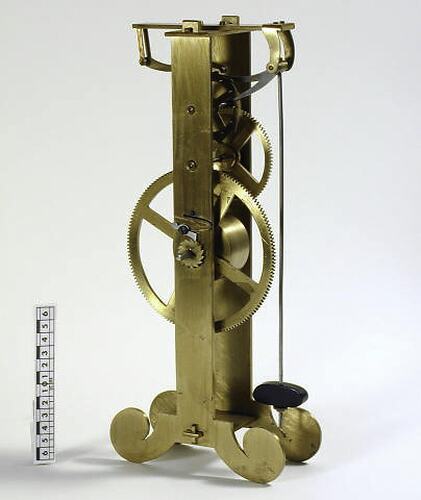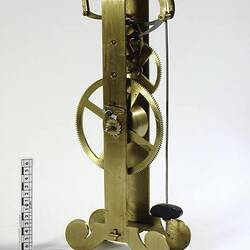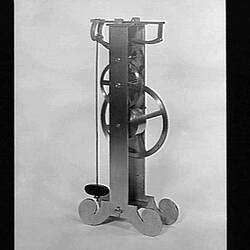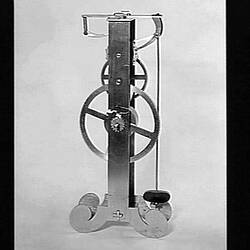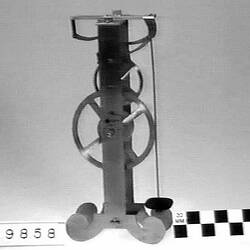Summary
Model of a pendulum clock designed by Galileo (1564-1642) shortly before his death and partly constructed by his son Vincenzio in 1649. Galileo was the first to suggest using a pendulum to more accurately control the rate of a clock. He had used a pendulum as a timekeeper while making astronomical observations. The first practical pendulum clock was designed by Huygens in 1657.
Replica based on drawings made after Galileo's death and subsequent models constructed in the 19th century. This model made by A.E. Coke, Scoresby, Victoria, 1959.
Physical Description
Mechanism held between two brass strips, mainspring in brass drum turns large cog wheel that drives gears. The pendulum connects via an escapement that is part verge and part anchor.
More Information
-
Collecting Areas
-
Acquisition Information
Commission from A. E. Coke, 1959
-
Maker
A. E. Coke, Scoresby, Greater Melbourne, Victoria, Australia, 1959
-
Designer
-
Classification
-
Category
-
Discipline
-
Type of item
-
Overall Dimensions
15 cm (Length), 7 cm (Width), 34 cm (Height)
-
Exhibition Collection Management
140 mm (Length), 80 mm (Width), 230 mm (Height)
-
Keywords
Clocks, Pendulums, Physical Apparatus & Instruments, Horology
